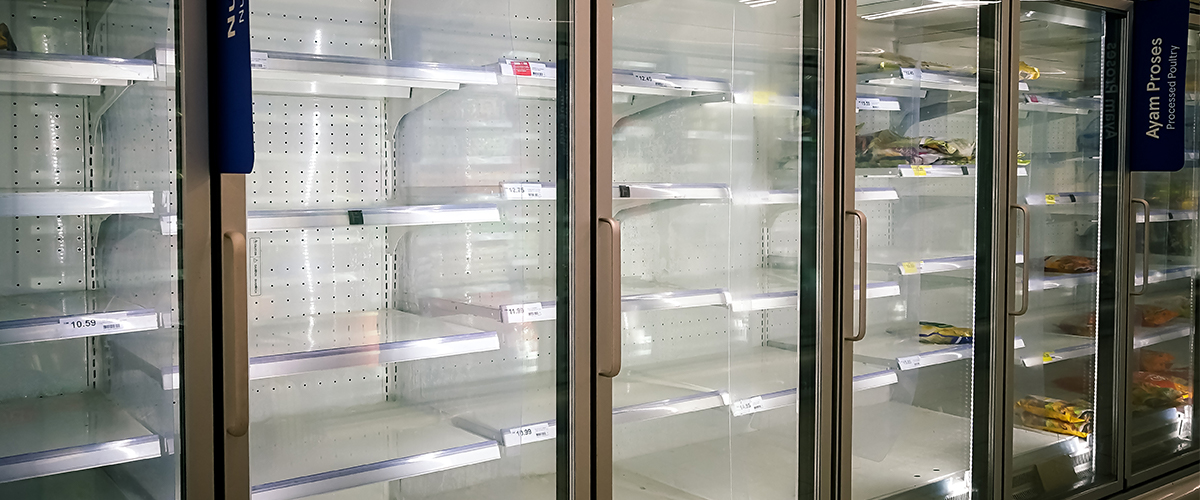Be Kind To Our Restaurant Staff
Over the last few years, the Covid 19 pandemic marked the end of employment for millions of hospitality staff members across the country, with a large portion of the food and hospitality industry grinding to a halt in 2020. To make matters worse, a fair number of businesses also went bankrupt. To ensure the security of those put out of work, our federal government started many programs for (COVID Relief) to help Americans pay their rent and sustain their households. Besides federal aid, local governments in each state also provided monetary compensation for their citizens. Basic support consisted of $300 per week from the federal government and $300 more from the local government, depending on your state. They paid single people and families $2,000 a month in some cases. For some, that’s more than enough for survival.

An Old Issue
While this may seem like the bare minimum needed to survive, one must consider ongoing labor disagreements in the restaurant industry before covid. For years, restaurants have paid their workers the basic minimum wage, forcing them to rely on tips to supplement their incomes. Of course, depending on tips is not always beneficial; not everyone receives the same share of tips. Worse, most restaurant kitchen staff are rarely tipped out. More importantly, many restaurants do not offer any health or unemployment benefits. There is little room for advancement. Their working hours are not guaranteed; one can be out of a job at the end of a shift without warning.
For years, workers in the restaurant industry have lobbied the government to organize to raise the minimum wage. Still, despite all the protests and mobilization, the current federal wage for restaurant workers stands at $7.25 an hour, which is barely enough to pay for food and transport, let alone rent. Given this, ‘Is anyone surprised that most people are in no hurry to get back to work in the restaurant industry?”
Since Jan 2021, covid vaccines have been available for free for all Americans. As of July 2021, about 60% of Americans were fully vaccinated, but at least 130 million Americans remain unvaccinated. Our government hoped that by having the entire population vaccinated, things could return to normal, but with millions unvaccinated, many people elect to stay at home. Worse, many vaccinated people still refused to return to work or find a new job because they were still worried they might acquire Covid.
As for restaurants, hotels, and many businesses within the hospitality industry, one major ongoing headache has been the drastic reduction in the workforce. For many, the restaurant industry has always been typically temporary. People who work in the restaurant industry tend to be musicians, students, retirees, aspiring actors, or new graduates with degrees in political science, sociology, or the arts. Many of these workers only work to supplement their income, and for the most part, all are looking for better jobs with bigger pay. Working in the restaurant industry is generally not pleasant; the hours are long, they include weekends, benefits are rare, salaries are low, and most rely on tips to survive.
The Same Problems Persist
Restaurants in almost every state are scrambling to find workers. One of the reasons is that some state governments continued to provide benefits for so long. Also, it seems as though nothing in the restaurant industry has changed regarding the worker’s pay or conditions. There is nothing new attracting workers looking for work in restaurants; working hours are tricky, no benefits are offered, and there is still little room to move up. For example, an average restaurant worker makes less than $10 an hour in many states. But most people cannot work for less than $10 an hour, they will instead find a job offering benefits and a better salary, and no one can blame them.
With most Americans now vaccinated and the warmer months of 2023 upon us, there is great optimism in the restaurant industry, but getting employees to return and remain is a significant battle.
Workforce Demand
Data from the US Bureau of Labor and Statistics indicated over 10.3 million job openings in June 2021, but the retention rate remained very low. This rapid turnover of the staff adversely affected the restaurant’s profitability. Plus, the cost of replacing an employee who makes $10-$12 an hour can be expensive.
The shortage of workers is a nationwide problem facing many businesses that need laborers, unskilled workers, and part-time workers. From hotels and restaurants to grocery stores, employers are still not able to find help. Many companies have reduced their working hours, some have even cut down on their services, and others have stopped working weekends because of staff shortages. The most severe deficiencies are in the fast food and quick-service eateries, but there are shortages in almost every position, including kitchen, bartending, servers, managers, and cleaners.
So What Options Do Restaurants Have With Labor Shortages?
Experts in the hospitality and restaurant industry say that the times favor employees for now. There are many jobs on offer all over the nation, and the employer will need to make changes to attract good employees and retain them. For employees returning to work, two things needed to happen; 1) the government had to reduce financial aid, and 2) the hospitality industry had to change and offer better pay and conditions. Many states cut off Covid aid, resulting in more people seeking jobs. But there were few changes to pay and conditions, and so businesses still faced labor shortages. And as far as better pay is concerned, nothing has changed; it still stands at $7.25 an hour.
As of July 2021, 22 states ended federal unemployment benefits, saying it was time to return to work. Plus, with the number of vaccinated individuals gradually increasing, some Americans were trying to return to work. But experts indicated that the onus is on the restaurant owners to find good employees and retain them.
Adopting Strategies For Restaurants
Everyone agrees that employers must employ robust strategies to attract and retain employees, including offering better pay. Constant staff turnover is unproductive and is associated with enormous costs due to retraining. The most important factor is maintaining an excellent relationship between the staff and management. At the same time, it will be important that the team is content in their positions. With good strategies, restaurants can retain staff, boost production, and save money. Here are some essential staffing tips, according to experts in the hospitality industry.
The Hiring Process
Because restaurants are desperate for staff, they may be inclined to hire the first person who applies. This is not the right approach. Select the right candidate based on personality, character, and goals. It would help if you ensured that the applicant is honest, has the right temperament, and will not quit within a few months. You want a person who is a team player and willing to work hard.

Reasonable Schedule
Restaurant hours are long, and scheduling staff can be frustrating as one cannot please all employees. To accommodate your essential employees, do the following:
- Print your work schedule at least two weeks ahead and let the employee plan their life around the schedule. In addition, if there are any potential scheduling conflicts, they can be worked out as there is ample time. If you constantly post schedules the day before, you can rest assured your employees will not be content.
- Accommodate staff wishes when possible. While it is impossible to accommodate the wishes of all staff, you should at least try and accommodate the wishes of as many staff as possible. Ask your staff what days and hours they prefer to work and see if you can accommodate them. To avoid friction, at least accommodate some of the wishes of all the staff.

Offer Some Autonomy To The Employees
In the past, restaurant owners make workplace rules. Living at the whim of your employer has always been a source of frustration for workers. So try offering your employees some degree of autonomy. Ask them what they need to provide consistency and long-term sustainability; break times, working hours, and what type of uniform they wear can all be altered to suit your staff better. At least once a month, have a meeting with everyone and find out if there are any issues. Try to resolve these issues every time, or they will pile up and eventually lead to employees quitting their jobs. Even providing a little autonomy will give the employees a sense of belonging, and they will continue to be loyal.
Appreciate Your Hard-Working Employees
Rewarding an employee willing to work late-night shifts, work extra hours, or fill in for an absent worker is a great team-building exercise. The reward may be a nice dinner, gift card, or cash reward. This will motivate your employees to do better every day.
Use Staffing Agencies
One of the biggest problems that most employers in the restaurant business face are a lack of labor. To avoid this hassle, work with a staffing agency that will do all the leg work for you and provide staff when needed. Partnering with a staffing agency has many other advantages because they do all the administrative paperwork, find the right person, and even offer benefits and protection to prospective employees. This allows the management to focus on meeting the demands of the customers.
Provide Incentives
One of the best ways to retain staff who have been there for more than 90 days is to provide incentives. This may include health insurance, subsidizing daycare, providing gym membership, or even helping with down payments on their cars. In fact, some fast-food franchises offer scholarships for student employees who remain on the job for more than a year. Incentives make staff work harder and stay loyal. Unfortunately, while providing incentives is a great idea, it is not always practical for startups or small businesses. The reason is that the restaurant industry, for the most part, relies on part-time labor, and providing incentives to these employees can eat away the profits.
Employee Safety
All employees want to work in a safe environment. So ensure safety precautions are in place, especially for late-night shift workers. Ensure all employees know the safety precautions, including personal protective equipment.
Team Cross-Training
One of the most prominent mistakes restaurants makes is training just a few people for select jobs. For example, a server may only know about serving, or the bartender may only know about making drinks. But if one staff member is away, then chaos can reign. To avoid these issues, try and cross-train all the staff with skills that teach them to be all-around workers. For example, you can teach your servers how to bartend, supervise or take inventory. Thus, when a staff member is absent, another member can fill in; the restaurant will be more stable at the end of the day.

Make The Application Process Simple
In pre-covid days, employers usually had a ten-page application process, an interview, the second interview, a walk around, and so on. All this does is delay employment. So make the application process simple; you are not hiring these people to build rockets; instead, serving, cooking, and cleaning. With a lengthy application process, the chances are that your competitor will employ the candidate before you even know it. Have an online application process and a quick online interview. If you like the person, text them right away. Texting will also allow you to determine the response punctuality of the applicant.
Sign-on Bonus
Another option for full-time employees is to offer a sign-on bonus. Some restaurants even pay as much as $50-$100 for prospective employees to fill in the application form. Others pay employees cash at the end of every shift rather than wait until the week’s end.
Social Media
Unlike in the past, simply posting an available job sign on the front door will not cut it. Many restaurants have gone social and started to post want ads all over social media platforms. Plus, they use digital technology to advertise the available jobs across geographical borders.
Reveal Your Company Culture
One of the best ways to recruit good help is to showcase your business and what you offer in terms of benefits. Be creative and let the prospective employee know about flexibility in scheduling, health insurance, paid sick time, etc.

Conclusion
Getting employees to work in the restaurant industry is not easy because the pay is low and the hours are long. Working in a restaurant is generally not glamorous; it is hard work, and you are on your feet all day/night. So as an owner, you should appreciate what these employees go through daily. By offering decent pay and continually rewarding hard workers, it is possible to retain employees. Remember, today, there are plenty of jobs for people to choose from, and they can move on anytime. You have to give them a reason to stay with you.










